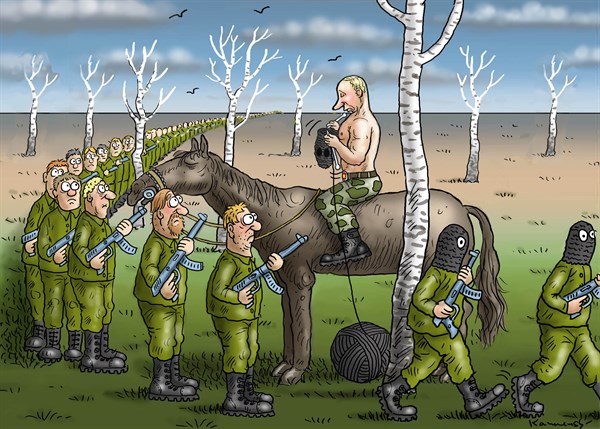n2doc
n2doc's JournalTuesday Toon Roundup 3- The Rest
Court


Rice

Gunz


Economy

Environment



Education


Net

24

Girls

Ukraine



2014

Length of an Exoplanet's Day Measured for First Time
Observations from ESO’s Very Large Telescope (VLT) have, for the first time, determined the rotation rate of an exoplanet. Beta Pictoris b has been found to have a day that lasts only eight hours. This is much quicker than any planet in the Solar System — its equator is moving at almost 100 000 kilometres per hour. This new result extends the relation between mass and rotation seen in the Solar System to exoplanets. Similar techniques will allow astronomers to map exoplanets in detail in the future with the European Extremely Large Telescope (E-ELT).
Exoplanet Beta Pictoris b orbits the naked-eye star Beta Pictoris [1], [2], which lies about 63 light-years from Earth in the southern constellation of Pictor (The Painter’s Easel). This planet was discovered nearly six years ago and was one of the first exoplanets to be directly imaged. It orbits its host star at a distance of only eight times the Earth-Sun distance (eso1024) — making it the closest exoplanet to its star ever to be directly imaged [3].
Using the CRIRES instrument on the VLT, a team of Dutch astronomers from Leiden University and the Netherlands Institute for Space Research (SRON) have now found that the equatorial rotation velocity of exoplanet Beta Pictoris b is almost 100 000 kilometres per hour. By comparison, Jupiter’s equator has a velocity of about 47 000 km per hour [4], while the Earth’s travels at only 1700 km per hour [5]. Beta Pictoris b is more than 16 times larger and 3000 times more massive than the Earth, yet a day on the planet only lasts 8 hours.
more
http://www.eso.org/public/news/eso1414/
America the Shrunken
Frank Bruni
NOT long ago I asked a good friend of mine — one of the smartest men I know, and one of the most devoted dads — if he thought that his children would live in a more prosperous America or at least enjoy the same bounty of opportunities that we had.
His response was instant and unequivocal. No.
“How do you make peace with that?” I said.
He shrugged, laughed bitterly and answered, “I’m hoping to leave them a lot of money.”
The American dream, 2014 edition: Squirrel away nuts for a leaner tomorrow. The worst is yet to come, so insure yourself against it if you’re among the lucky few who can.
more
http://www.nytimes.com/2014/05/04/opinion/sunday/bruni-america-the-shrunken.html
Is Lara Logan too toxic to return to 60 Minutes?
Eleven years ago, the 60 Minutes correspondent Lara Logan was sitting in the InterContinental hotel in Amman, Jordan, watching her career flash before her eyes.
She was 31 years old, a rookie at CBS News, assigned to cover the biggest story on earth: the invasion of Iraq. But nothing was going as planned. With only days until the American invasion, Logan had been forced to leave Baghdad and was desperate to get back before the war began, but she and her crew, because of the dangers of the imminent “shock and awe” bombing campaign, were forbidden from going by the network. That’s when she heard about a convoy of French reporters making the trek to Baghdad.
“She called me several times, begging to go with us,” recalls Laura Haim, a French TV journalist. But the French decided it was too dangerous having an American broadcaster onboard, even if she was South African. “I said, ‘No way.’?” Fluent in three foreign languages, Logan begged in French.
Logan had labored tirelessly for this chance, spending several months in Kabul during the invasion of Afghanistan and heedlessly throwing herself into danger for the camera to deliver raw reportage to the CBS Evening News and 60 Minutes II, the spinoff version of the Sunday program. Her work had earned her notice at the highest levels of the network. CBS chairman and CEO Leslie Moonves, from his perch in Los Angeles, viewed her steely eyes, breathless delivery, and exotic accent as the raw material of a future star. So Logan had strategized with her agent to make the biggest possible splash in Baghdad—a replay of Christiane Amanpour’s star turn at CNN during the first Gulf War.
Days later, as American bombs rained down on Iraq, the French reporter was startled to see Lara Logan standing in the lobby of the Palestine Hotel in Baghdad. “Look, I made it!” she declared.
much more
http://nymag.com/news/features/lara-logan-cbs-news-2014-5/
These charts show how millions of U.S. jobs pay less now than they did in 1999
The 10 most common occupations in America — with retail sales at the top — now make up one-fifth of total U.S. employment, according to the recently released Occupational Employment and Wages report for May 2013. Significantly, the average annual pay of seven of the top 10 in 2013 is down from 1999 when adjusted for inflation.
The top two jobs out of those 10 were the same in 2013 as they were in 1999. Those two, retail sales and cashiers, make up 6 percent of the workforce, up from 5.4 percent in 1999. The third largest, food preparation and serving workers, moved up from ninth in 1999. That job also includes fast food.
Nine of those 10 are in lower-paying jobs. Registered nurses are the only above average-paying job category in the 10 that remains from 1999. General and operations managers were fourth in 1999, but dropped to 11th in 2013.
Depending on the size of the families, some of these pay scales are close to the poverty level.


http://www.washingtonpost.com/news/morning-mix/wp/2014/05/05/charts-millions-of-u-s-jobs-pay-less-now-than-they-did-in-1999/?tid=rssfeed
Colorado faces oil boom "death sentence" for soil, eyes microbe fix
By Bruce Finley
Colorado's intensifying oil and gas boom is taking a toll on soil — 200 gallons spilled per day seeping into once-fertile ground — that experts say could be ruinous.
The state's approach has been to try to compel companies to excavate and haul the worst muck to landfills.
But with support from state regulators, oil companies increasingly are proposing to clean contaminated soil on site using mixing machinery and microbes. This may be cheaper for the industry — and could save and restore soil.
But it is not proven.
"I'm comfortable with it. It is another example of innovation and opportunity by the oil and gas and service industries," Colorado Oil and Gas Conservation Commission director Matt Lepore said. "The whole point is that it is safe, that the harm to the environment has been minimized."
At least 716,982 gallons (45 percent) of the petroleum chemicals spilled during the past decade have stayed in the ground after initial cleanup — contaminating soil, sometimes spreading into groundwater, a Denver Post analysis of COGCC data found.
more
http://www.denverpost.com/environment/ci_25692049/colorado-faces-oil-boom-death-sentence-soil-eyes
Arms Cache Most Likely Kept in Texas by the C.I.A.

WASHINGTON — In passing references scattered through once-classified documents and cryptic public comments by former intelligence officials, it is referred to as “Midwest Depot,” but the bland code name belies the role it has played in some of the C.I.A.’s most storied operations.
From the facility, located somewhere in the United States, the C.I.A. has stockpiled and distributed untraceable weapons linked to preparations for the Bay of Pigs invasion and the arming of rebels and resistance fighters from Angola to Nicaragua to Afghanistan.
Yet despite hints that “Midwest” was not actually where it was located, the secrecy surrounding the C.I.A. armory has survived generations of investigations. In a 2007 essay on the 20th anniversary of the Iran-contra affair, for example, a congressional investigator noted that the facility where the C.I.A. had handled missiles bound for Iran remained classified even as other “incredible things were unveiled during the hearings.”
But three years ago, it became public that the C.I.A. had some kind of secret location at Camp Stanley, an Army weapons depot just north of San Antonio and the former Kelly Air Force Base, though its purpose was unclear. And now, a retired C.I.A. analyst, Allen Thomson, has assembled a mosaic of documentation suggesting that it is most likely the home of Midwest Depot.
more
http://www.nytimes.com/2014/05/05/us/arms-cache-most-likely-kept-in-texas-by-the-cia.html?hp&_r=1
Profile Information
Gender: Do not displayMember since: Tue Feb 10, 2004, 01:08 PM
Number of posts: 47,953















